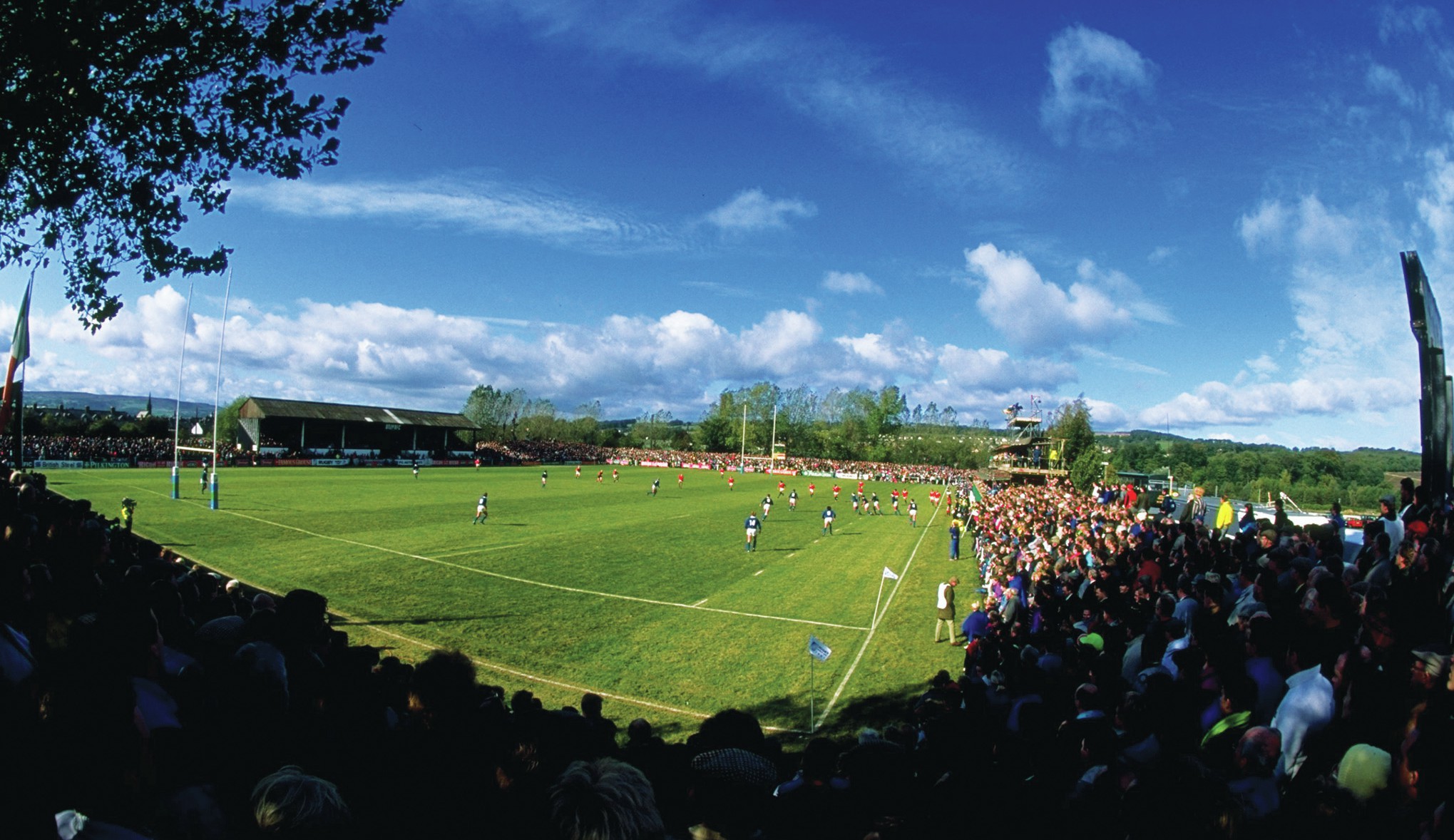Little Otley is a jewel in crown of the World Cup

Brendan Gallagher delves into some of rugby's most enduring images, their story and why they are still so impactful
Iconic Rugby Pictures:
PART 65 Italy beat USA in World Cup at Otley
Oct 5, 1991
What's happening here?
It's October 5, 1991 at Cross Green Otley and, just 48 hours after England had opened RWC1991 with a downbeat 18-12 defeat against New Zealand at Twickenham, the tournament is continuing apace. It's the second game in England's Pool with Italy taking on the USA. Former Wasps back Mike Williams is re-starting the game after a sensational score from Italy's young scrum-half Ivan Francescato.
The crowd are en fete. England might have made a disappointing start but this is the second biggest occasion in Otley rugby history and everybody is intent on having a good time. The full potential of the World Cup was beginning to become evident.
What's the story behind the picture?
Cross Green had a strong, if hardly overwhelming, claim to stage a World Cup match. It is after all the smallest ground in terms of official capacity – 5,000 – ever to stage a World Cup game, just taking that accolade ahead of Netherdale in Galashiels (6,000). In those days, however, Health and Safety was much more relaxed and the police estimate for this crowd on this auspicious day was 7,5000.
Otley did, of course, stage one of the most famous matches in English rugby history in 1979 when the North defeated the All Blacks and had also hosted the Australian tourists as well as countless Yorkshire County matches. It was definitely on the map as a rugby venue but you might still wonder how it got the nod ahead of other bigger more handily situated regional grounds.
The answer is the indefatigable lobbying of Roy Manock –a local solicitor, Yorkshire committee man and future president of the RFU – who was determined that Yorkshire would not be omitted from the World Cup party. And let's also doff a cap to the imagination and foresight of the nascent World Cup organising committee.
Cross Green and Otey was a name that resonated around the rugby world on account of the North's routing of the All Blacks and given a fair day would look magnificent on TV screens. The weather gods duly obliged. What the World Cup looked and felt like in these early days was nearly as important as the rugby itself.
What happened next?
A resounding Italy win, still one of their best in the tournament, in which they combined plenty of grunt up front with the odd moment of genius behind the scrum in their 30-9 victory, four tries to one. This despite the fact that pre-match they had kicked up quite a fuss about the length of the lush verdant grass – they didn't want to get bogged down in a sluggish forward battle against the Eagles big pack.
Francescato was their main man, a livewire at scrum-half and so talented and assured that day you wonder why Italy ever tried to convert him to centre later in his career before his tragic premature death from a heart attack in 1999 aged 31.
It was his second-half try that caught the headlines, one of the best in the tournament. It was Italy's lineout just over 40m out and they threw to the front where the ball was knocked down to Francescato. He gathered and first had to avoid referee Owen Doyle – always known in the media as Dublin wine merchant Owen Doyle – and the Eagles hooker Tony Flay.
Then he sped down the right touchline outstripping scrum-half Barry Daily before stepping infield dramatically to dismiss Eric Whitaker from his presence. Finally with a wonderfully exuberant flourish he stepped inside the Eagles' Scottishborn full-back Ray Nelson to score a very easy try on the eye. With his long jet black hair going one way and his body the other Francescato cut a dash and hinted at an exotic rugby world beyond the confines of the Five Nations.
Why is the picture iconic?
There are not many rugby photographs you would describe as beautiful. Dramatic, action-packed, poignant, newsworthy, historic, amusing, tragic – all of the above – but beautiful?
But there is something undeniably beautiful and beguiling about this timeless rustic scene. The venue might be North Yorkshire but those clouds are pure Constable or Gainsborough, borrowed from their beloved Suffolk. The colours are early autumn but actually it was quite a hot clammy day, the last remnants of an Indian summer. The poplar trees shield the pitch from the wind at both ends.
Otley was the archetypal small intimate ground. Just one ‘grandstand' which seated 3-400 punters with the rest of us on small terraces and makeshift stands. The crowd is right on top of the two teams, quasi participants in the match. Rugby was still amateur and nobody really knew how big the World Cup would rapidly become.
Footnote: Otley enjoyed its moment in the sun. When the World Cup returned to the Five Nations eight years later, times had changed and the need to turn a big profit was imperative. This time round the unlovely but perfectly functional 25,000 capacity McAlpine stadium in Huddersfield was used in the North. It was fine…. but it wasn't Otley!